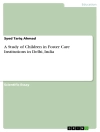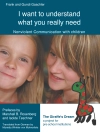This book approaches STEAM (Science, Technology, Engineering, the Arts and Mathematics) in early childhood education from multiple angles. It focuses on the teaching and learning of children from two years of age to the early years of school. Proponents of STEAM describe how it can create opportunities for children to learn creatively, and various chapter authors make strong connections between discipline areas within the context of an informal curriculum. Others advocate for an integrated STEM, rather than STEAM, approach. With a light touch on theory and a focus on how to embed STE(A)M in an integrated early childhood curriculum, the editors and contributors examine the STEAM versus STEM question from multiple angles. The chapters provide helpful frameworks for parents, teachers and higher education institutions, and make practical suggestions of ways to support young children’s inquiry learning. Drawing on pedagogy and research from around the world, this book will be of interest toscholars of STEAM education, early childhood educators, students of early childhood education and parents of young children.
İçerik tablosu
1. Weaving Science Through STEAM: A Process Skill Approach.- 2. Integrating Design Thinking, Digital Technologies and the Arts to Explore Peace, War and Social Justice Concepts with Young Children.- 3. Creative Digital Art: Young Children’s Video Making Through Practice-Based Learning.- 4. Augmented Reality in Early Childhood Education: Accessing Complex Concepts Within Imaginative Play Worlds.- 5. Screen-Free STEAM: Low-Cost and Hands-on Approaches to Teaching Coding and Engineering to Young Children.- 6. Integrating Engineering Within Early STEM and STEAM Education.- 7. STEAM Through Sensory-Based Action-Reaction Learning.- 8. To STEAM or Not to STEAM: Investigating Arts Immersion to Support Children’s Learning.- 9. Using Mathematical Investigations in Projects for STEAM Integration.- 10. Toddlers’ Mathematics: Whole Body Learning.- 11. The Mechanics of Interaction in Early Childhood STEAM.- 12. STEM Learning Ecologies: Productive Partnerships Supporting Transitions from Preschool to School Growing a Generation of New Learners.- 13. STEM or STEAM or STREAM? Integrated or Interdisciplinary?.
Yazar hakkında
Caroline Cohrssen is an associate professor in the Faculty of Education at The University of Hong Kong. Her research interests include learning and teaching in the years prior to school entry. This includes the home learning environment and early childhood education settings.
Susanne Garvis is a professor in the Department of Education at Swinburne University of Technology in Melbourne, Australia. Her research interests include quality, policy and learning in early childhood education.












